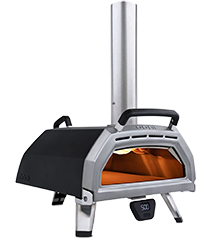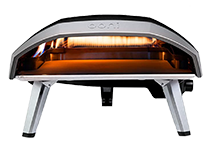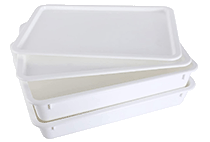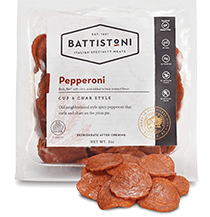Pizza ovens are versatile cooking appliances that offer more than just a way to whip up authentic pies. Whether you own a wood-fired pizza oven, an outdoor pizza oven, or even a classic brick oven, these culinary tools can elevate what can you cook in a pizza oven for your home cooking experience.
My journey into the world of pizza ovens revealed they are not limited to just traditional pizza making; their high-temperature capabilities provide a unique cooking environment ideal for a variety of dishes!

Exploring the uses of a pizza oven uncovered a treasure trove of culinary possibilities. Beyond crafting the perfect pizza with a crispy crust and bubbling cheese, I discovered that these ovens can perfectly char vegetables, roast meats with a smokey depth of flavor, and even bake bread with a rustic crust.
The key to unlocking the full potential of a pizza oven lies in understanding its heat distribution and learning the right accessories to use, which can significantly expand your cooking repertoire.
Key Takeaways
- A pizza oven is not exclusive to pizza; it is suitable for roasting, baking, and more.
- High temperatures and unique heat dynamics of pizza ovens allow for specialized cooking techniques.
- Proper maintenance and the right accessories enhance the versatility and performance of pizza ovens.
Table of Contents
Understanding Pizza Ovens

In my exploration of pizza ovens, I’ve found that they are versatile tools capable of more than just pizza. They offer unique flavors and cooking techniques due to their design and heating elements.
Types of Pizza Ovens
When it comes to pizza ovens, they generally fall into three categories: wood-fired, gas, and charcoal. Each type has its characteristics that affect the pizza’s flavor and cooking style. A wood-fired oven uses hardwood, infusing the pizza with a distinctive smoky flavor that is highly prized among connoisseurs.
Gas ovens, on the other hand, provide a consistent heat that is easier to control, making them a popular choice in a busy kitchen. Charcoal ovens are another option, offering a middle ground with a subtle smokiness and high heat similar to wood-fired ovens. Pizza ovens also vary a lot by price.
| Oven Type | Heat Source | Flavor Profile | Kitchen Suitability |
|---|---|---|---|
| Wood-fired | Hardwoods | Distinctive smoke | Outdoor/Spacious |
| Gas | Propane/Natural Gas | Consistent, less smoke | Indoor/Outdoor |
| Charcoal | Charcoal Briquettes | Subtle smoke | Outdoor |
Optimizing Oven Temperature
Achieving the right temperature is vital for the perfect pizza. I personally monitor my oven’s temperature with a thermometer to ensure precision. For wood-fired ovens, I aim for the interior to reach between 700°F to 800°F, which allows pizzas to cook within minutes and attain that desirable charred crust.
Gas and charcoal ovens also require heat monitoring, often with the aid of built-in gauges or external thermometers, to maintain a steady cooking environment. It’s important to let these ovens heat up for a sufficient amount of time before cooking to stabilize the heat levels.
| Oven Type | Ideal Temperature Range | Heating Time | Thermometer Use |
|---|---|---|---|
| Wood-fired | 700°F – 800°F | 45 mins – 1 hour | Essential |
| Gas | 500°F – 700°F | 15 – 20 mins | Recommended |
| Charcoal | 650°F – 750°F | 15 – 30 mins | Recommended |
Using these ovens effectively requires an understanding of how their heat sources influence cooking time and flavor. My experiences have taught me the subtleties of working with smoke and heat to create perfect dishes in each type of pizza oven.
Classic Pizza Crafting
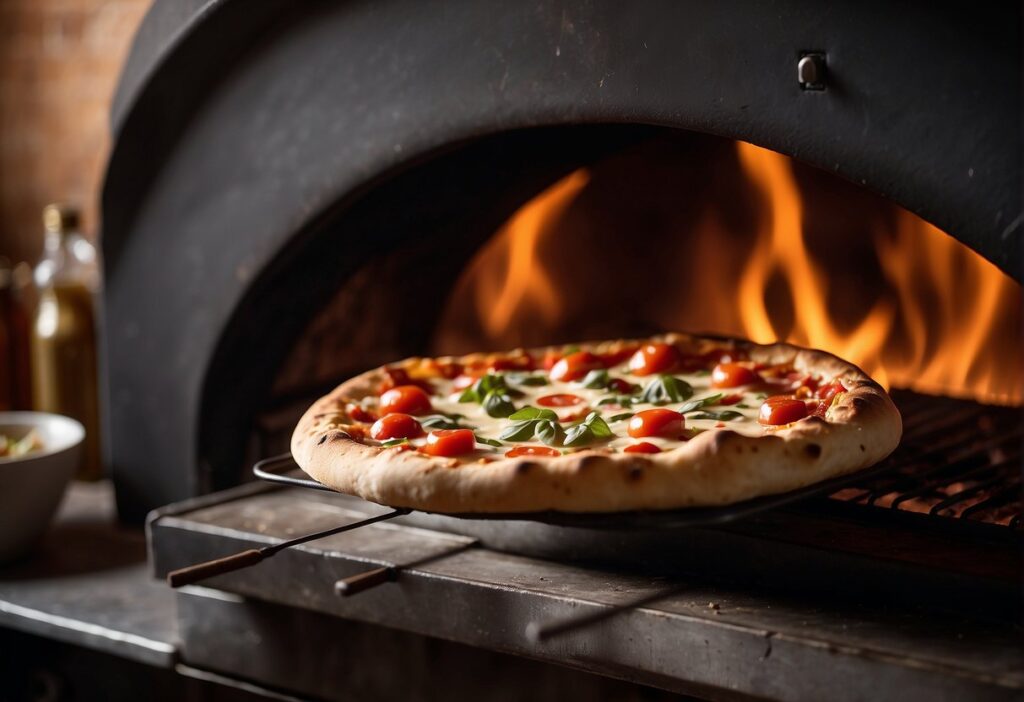
In my experience as a pizza aficionado, crafting an authentic pizza in a pizza oven involves a mastery of dough preparation and a strategic selection of toppings. These two elements are fundamental in achieving the perfect pizza.
Perfecting Your Dough
Ingredients:
- 4 cups of high-protein flour
- 1 tsp of active dry yeast
- 1 tsp of salt
- 1 1/2 cups of warm water
- 2 tbsp of olive oil
To craft pizza like a pro in a pizza oven, I start with high-quality dough. I mix high-protein flour with active dry yeast, a teaspoon of salt, warm water, and a dash of olive oil. This recipe yields a dough with the ideal texture for stretching.
Steps:
- Dissolve the yeast in warm water and let it sit until it’s frothy.
- Combine the flour and salt in a mixing bowl.
- Gradically mix the yeasty water and olive oil into the dry ingredients.
- Knead the dough until it becomes smooth and elastic.
- Allow the dough to rise in a warm spot until it doubles in size.
For best results in a wood-fired oven, especially when aiming for Neapolitan-style pizza, the dough must be thin in the middle with a puffy, charred crust.
Topping Selection
Base Sauce:
- Crushed tomatoes
- Minced garlic
- Salt
- A pinch of pepper
- A drizzle of olive oil
A proper base sauce for the pizza starts with crushed tomatoes. To infuse flavor, I add minced garlic, a pinch of salt and pepper, and a drizzle of high-quality olive oil.
Cheese and Toppings:
| Cheese | Toppings |
|---|---|
| Mozzarella (sliced) | Bell peppers |
| Parmesan (grated) | Mushrooms |
| Ricotta (dolloped) | Pepperoni slices |
| Gorgonzola (crumbled) | Fresh basil |
When selecting cheeses and other toppings for my pizza, I consider flavor and melting qualities. Mozzarella is a must for its stretchiness, and I often pair it with parmesan for sharpness. For a tangy touch, I sometimes add dollops of ricotta or crumbled gorgonzola.
Toppings like bell peppers, mushrooms, and pepperoni slices are traditional favorites. However, I don’t saturate the pizza with toppings as this can impact baking and result in a soggy crust. A finishing touch of fresh basil leaves and a final drizzle of olive oil completes my creation before it goes into the pizza oven.
Beyond Pizza: Diverse Cooking

In my experience, a pizza oven isn’t just for pizza. Its high heat and unique air flow can produce a variety of delectable dishes, ranging from meats and seafood to breads and desserts.
Meats and Seafood
I’ve found that the intense heat from a pizza oven is ideal for searing meats and roasting seafood. Here are some options I’ve cooked to perfection:
- Steaks: Sear at high oven temperature for a flavorful crust.
- Burgers: Cook quickly for a smoky, charred taste.
- Shrimp: Roast in a hot oven for a tender, succulent texture.
- Bacon: Roast until crisp for a deeply satisfying crunch.
Baking Breads and Sweets
The even and enveloping heat of a pizza oven makes baking a joy. I often bake:
- Garlic Bread: Crisp outside with a soft, garlicky center.
- Focaccia: With olive oil and herbs, it gets a beautiful crust and airy texture.
- Sourdough: Produces an exemplary, crackling crust.
- Cinnamon Rolls: The high heat creates quick caramelization and soft, doughy rolls.
Vegetarian Delights
A pizza oven encourages me to get creative with vegetables and sides. My go-tos include:
- Roasted Vegetables: Zucchini and eggplants caramelized to perfection.
- Potatoes: Roast whole for a fluffy inside and crispy skin.
- Corn on the Cob: Cook in the husk for a smoky, juicy side dish.
Smoky Flavor Infusions
I often use the oven’s smoky environment to infuse flavors into various dishes:
- Baked Fish: I wrap it in foil with herbs and lemon for a smoky, moist dish.
- Ratatouille: The smoke complements the meld of tomatoes, peppers, and eggplant.
Desserts and Treats
My pizza oven also doubles as a venue for crafting sweet finales:
- Cookies and Brownies: For a deep, rich taste with a chewy edge.
- Cheesecake: I bake it slowly for a uniquely dense and creamy texture.
- Chocolate Marshmallows: They melt irresistibly, ideal for a smoky s’mores experience.
Each subsection taps into the capabilities of a pizza oven to create dishes that excite the palate beyond the realm of traditional pizza.
Specialty Techniques and Recipes
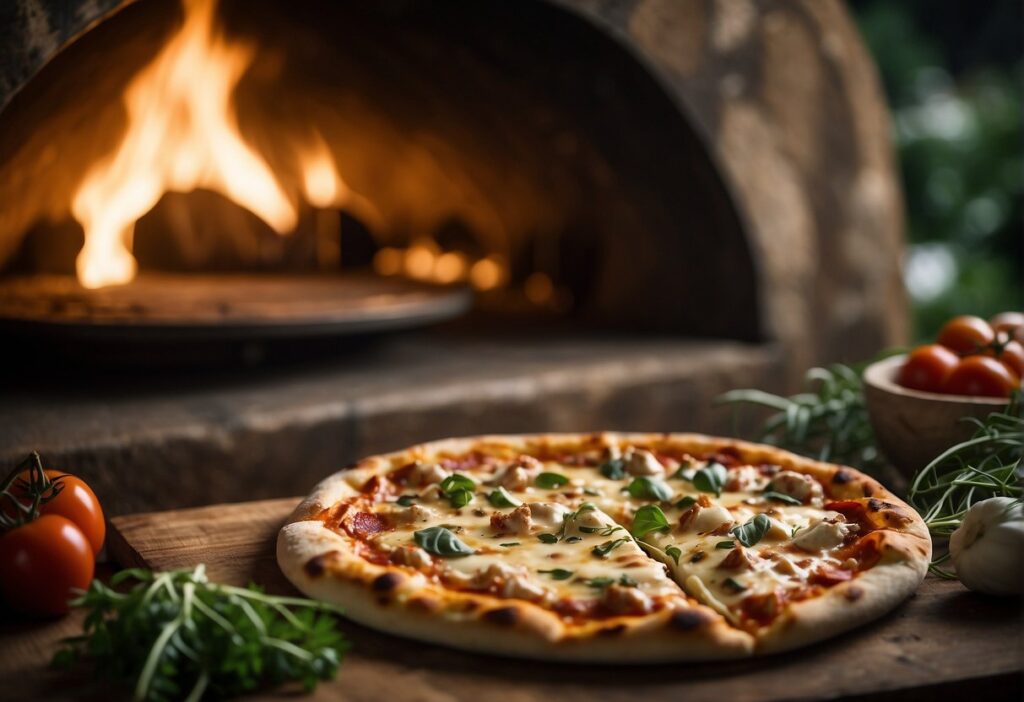
In my exploration of pizza ovens, I’ve honed in on two areas that elevate the cooking experience: traditional wood-fired techniques and global recipes that introduce a variety of flavors.
Wood-Fired Artisanal Techniques
Wood fire is the soul of traditional pizza ovens, and mastering these flames can transform a simple meal into a culinary event. My go-to technique involves maintaining a consistent temperature with the right species of wood that burns long and steady, offering a subtle smoky flavor to the dishes. Cast iron skillets are excellent for this environment. Here’s an example of how I utilize wood fire in my cooking:
- Cast Iron Skillet BBQ Ribs
- Prep: Season the ribs with a dry rub of choice.
- Cook: Sear the ribs in a preheated cast iron skillet inside the pizza oven, then slow-cook them with the oven’s residual heat until tender.
The result is BBQ ribs with a smoke-infused taste that’s difficult to replicate in a conventional oven.
Global Culinary Adventures
Creating an international menu with a pizza oven is an exhilarating journey that I often embark upon. The techniques vary, but one standout is beer can chicken, a recipe that capitalizes on the even heat distribution of a pizza oven.
By using a can of beer as a stand to support the chicken, it not only cooks evenly but also absorbs the beer’s flavor as it evaporates, resulting in moist and flavorful meat every time.
Beyond barbecue, I enjoy taking advantage of my pizza oven’s versatility by crafting dips that can be served with freshly cooked bread. Here is a simple yet exquisite dip recipe:
- Warm Cheese and Herb Dip
- Ingredients: Mix assorted cheeses, herbs, garlic, and a touch of olive oil.
- Method: Place the mixture in a small skillet and cook in the pizza oven until bubbly and golden.
This method, paired with the radiant heat of the wood fire, produces dips that are irresistibly rich with a slightly smoked undertone. Whether it’s for BBQ ribs, beer can chicken, or luscious dips, my pizza oven is not just for pizzas—it’s a gateway to a world of flavor.
Pizza Oven Maintenance

Proper maintenance ensures the longevity and safety of your pizza oven. I will discuss effective methods for keeping your oven in optimal condition for creating delicious meals.
Cleaning and Care
Daily Cleaning Routine: After using my brick oven, I ensure to brush the cooking surface while it’s still warm, which helps in removing food residue. It’s important to wait until the oven temperature drops to a safe level to avoid burns. I remove the ashes with a metal scoop and use a damp cloth to wipe the exterior.
- Frequency: I recommend daily cleaning for frequent users, or after each use.
Periodic Deep Cleaning: Every few months, a thorough cleaning is essential. I check for any cracks or damages in the brick and use oven cleaner for tough spots. For optimal cooking temperature, a clean interior is a must.
- Materials: A brass-bristle brush, oven cleaner, and a damp cloth are my tools of choice.
Safety and Upkeep
Kitchen Safety: I ensure that combustible materials are kept away from the oven, and it’s installed in a well-ventilated area of my kitchen. A functional thermometer is key to monitor oven temperature, ensuring it’s neither too high nor too low for safe operation.
| Inspection | Tool | Frequency |
|---|---|---|
| Oven Temperature | Infrared Thermometer | Before Each Use |
| Structural Check | Visual Inspection | Every 3-6 Months |
Routine Inspection: I always inspect for wear and tear, especially in the door, chimney, and insulation. This prevents unexpected breakdowns that could affect not just cooking temperature but also safety during operation.
Pizza Oven Accessories
When equipping a pizza oven, I always make sure to have the right tools and devices to manage temperature. These accessories are essential for consistently excellent results.
Must-Have Pizza Oven Tools
The essentials for any pizza oven enthusiast include:
- Peel: I find that having a high-quality peel is non-negotiable. It is the tool used to slide pizzas in and out of the oven effortlessly. For Ooni ovens and others alike, peels come in various materials such as wood and metal.
- Cast Iron Skillet: A versatile cast iron skillet is crucial for dishes other than pizza. It can withstand high temperatures and is perfect for roasting vegetables or cooking meats in the pizza oven.
Thermal Management Devices
Managing the heat within the pizza oven is critical. Here are a few devices I use:
- Thermometer: A reliable thermometer is necessary to monitor the temperature inside the pizza oven. This ensures that the heat is consistent and just right for the type of pizza I’m cooking.
- Wood: Choosing the right type of wood is important for temperature control, especially in traditional wood-fired pizza ovens. It affects both the heat and the flavor profile of the pizza.
Frequently Asked Questions
In this section, I address the most common queries about the versatility of pizza ovens and how to optimize their use for a variety of dishes.
What types of dishes can be prepared in a wood-fired pizza oven?
A wood-fired pizza oven excels at cooking pizzas but can also be used for roasting meats, baking bread, and grilling vegetables. The high heat and smoke add a unique flavor to everything you cook.
How do you utilize an indoor pizza oven for other recipes besides pizza?
An indoor pizza oven, like the pizzazz, can be used for baking flatbreads, roasting vegetables, and cooking fish. The even heat distribution is perfect for dishes that require a crispy crust or delicate baking.
Could you suggest some recipes specifically suited for an outdoor pizza oven?
For an outdoor pizza oven, recipes like whole roasted chicken, smoked ribs, and artisanal sourdough bread are ideal. These dishes benefit from the high temperatures and smoky atmosphere.
Are there any unique recipes tailored for cooking in an electric pizza oven?
Yes, electric pizza ovens are great for focaccia, stuffed calzones, and even desserts like fruit tarts. The precise temperature control helps in achieving consistent results.
What are the best non-pizza dishes to cook in a propane pizza oven?
In a propane pizza oven, you can excel by preparing dishes like flank steak, cedar plank salmon, and roasted Mediterranean vegetables. Propane ovens provide a clean heat source that can be easily adjusted.
Can you provide some examples of foods that can be baked in an Ooni pizza oven other than pizza?
In an Ooni pizza oven, you can bake a variety of foods such as roasted leg of lamb, wood-fired shakshuka, and pear galette. The oven’s design allows for quick cooking times and a unique charred flavor.

